Different Types of Shipping Containers, Trailers, Trucks, and More: Choose the Best Cargo Space for You
Choosing the right cargo space is not only crucial for the safe and efficient transportation of your goods but also a key factor in determining how cost-effective your shipping will be. Read on to learn about the different types of cargo spaces available and which ones are best suited for specific types of goods.
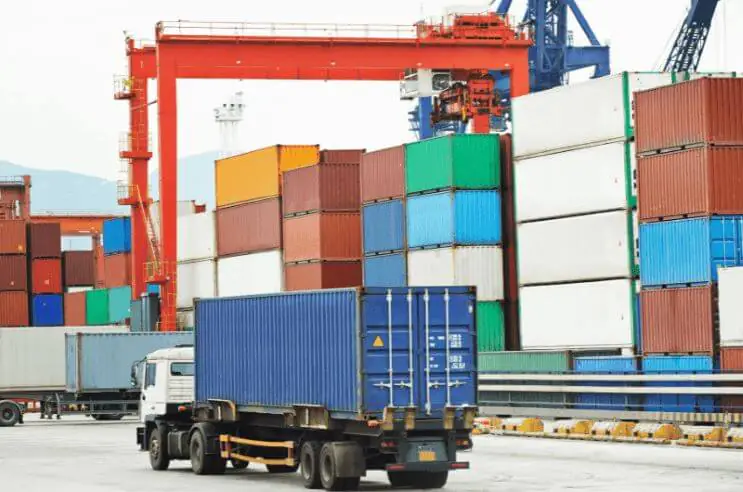
Source: www.canva.com
Below you will find a table of common cargo spaces and the types of cargo they are most suitable for:
table {
border-collapse: collapse;
width: 100%; /* Přizpůsobí tabulku šířce kontejneru */
}
th, td {
border: 1px solid black;
padding: 8px;
text-align: left; /* Zarovnání textu vlevo */
}
/* Podbarvení prvního řádku – tmavě modrá */
tr:first-child {
background-color: #5FC2EA;
color: white; /* Bílý text pro lepší čitelnost */
}
/* Podbarvení prvního sloupce (kromě prvního řádku) – světle modrá */
tbody tr:not(:first-child) td:first-child {
background-color: #D1E8F7;
}
| Type of Cargo Space | Suitable Cargo |
|---|---|
| Standard shipping containers | Consumer goods (clothing, electronics, toys, household items, food products, etc.) |
| Open top containers | Oversized or bulky items, machinery, and goods with unusual shapes |
| Side opening containers | Oversized or bulky items, machinery, and goods requiring easy side access |
| Flat rack containers | Construction machinery, large metal structures, and other oversized goods |
| Reefer containers | Anything that requires temperature-controlled transportation (frozen foods, fresh products, pharmaceuticals, chemicals) |
| Box truck | Consumer goods (furniture, electronics, textiles, etc.) |
| Flatbed truck | Construction supplies, large machinery, and other weather-resistant cargo. |
| Reefer truck | Goods that require temperature-controlled transportation (frozen foods, fresh products, pharmaceuticals, chemicals) |
| Tanker truck | Liquid materials such as fuel, chemicals, and others |
| Lowboy truck | Heavy and tall items like construction machinery or cranes |
| Flatbed trailer/semitrailer | Construction materials, large machinery, long items like pipes or beams, oversized cargo that doesn’t need to be enclosed |
| Reefer trailer/semitrailer | Goods that require temperature-controlled transportation (frozen foods, fresh products, pharmaceuticals, chemicals) |
| Tanker trailer/semitrailer | Liquids like fuel, water, chemicals, food-grade liquids, or industrial liquids |
| Lowboy trailer/semitrailer | Heavy and tall items like construction machinery, cranes, or large industrial equipment |
| Car carrier trailer/semitrailer | Multiple vehicles |
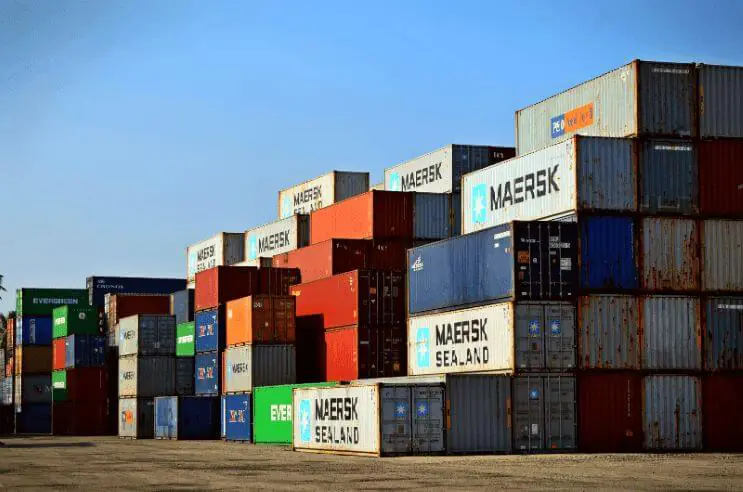
Source: www.canva.com
1. Containers: The Backbone of Freight Transport
Did you know that about 65 million shipping containers are in use worldwide? Although container transport is predominantly associated with maritime shipping—more than 60% of the world’s consumer goods are transported via shipping containers—containers are also used in other types of transportation.
According to the statistics, in 2022, the share of container transport in total rail transport performance in the EU was estimated at 22.2%. In road transport, container transport accounted for approximately 5.8% (europa.eu, 2024).
Types of Shipping Containers
When using containers, you can transport many types of goods. You just need to choose the right type of container and the right container size for your cargo.
- Standard shipping containers: These containers are closed, with solid walls, a floor, and a ceiling. They are designed for the transportation of most types of goods, such as clothing, electronics, toys, household items, food products, and others.
- High cube container vs. Standard container—a high cube container is a standard container with the only difference being that it is taller than a regular one (about 30 cm (1 ft.) taller). This makes it more suitable for transporting bulky or taller items.
- Open-top containers: These containers have a removable roof which allows for easier loading and unloading of goods from the top. They are suitable for cargo that cannot be loaded in the usual way such as overly large or bulky items, machinery, and other goods with unusual shapes.
- Side opening containers: This type of container is similar to the open-top container with the only difference being that these containers can be opened from the sides. They are suitable for items that require easy access from the sides for loading and unloading such as machinery like CNC milling machines, lathes, and others.
- Flat rack containers: These containers have walls and a roof made of tarpaulin. They only have a solid floor and side edges. They are designed for transporting oversized goods that do not require an enclosed space such as construction machinery, large metal structures, and others.
- Reefer containers: These containers maintain a low temperature throughout the transportation process. Therefore, they are used for transporting frozen goods such as food, medicines, or chemicals. The temperature can be set to a wide range of temperatures, typically from -25°C (-13°F) to 25°C (77°F), depending on the cargo’s needs.
There are other types of containers as well, but these are among the most commonly used.
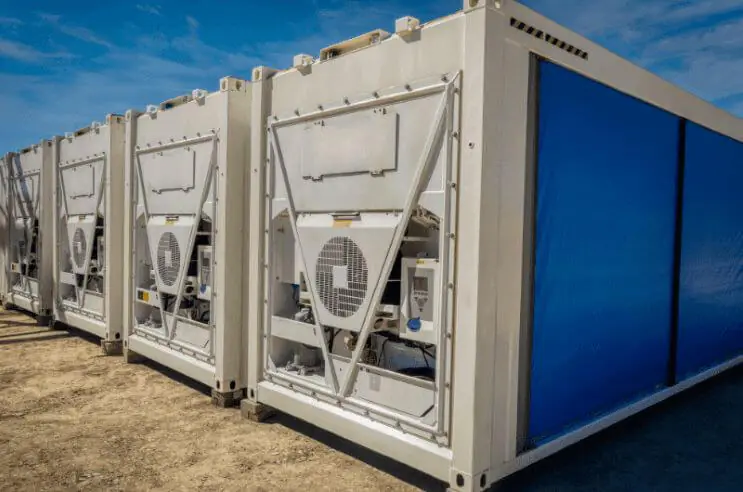
Source: www.canva.com
Shipping Container Sizes
Below is a table of some of the most common container sizes that are commonly used for transportation.
table {
border-collapse: collapse;
width: 100%;
}
th, td {
border: 1px solid black;
padding: 8px;
text-align: left;
}
/* Podbarvení prvního řádku – tmavě modrá */
tr:first-child {
background-color: #5FC2EA;
color: white;
}
/* Podbarvení prvního sloupce (kromě prvního řádku) – světle modrá */
tbody tr:not(:first-child) td:first-child {
background-color: #D1E8F7;
}
| Container size | Inner length | Inner width | Inner height | Weight Capacity of the shipping container |
| Container 20′ | 18′ 10.7″ | 7′ 8.6″ | 7′ 9.9″ | 28,200 kg (62,170 lbs) |
| Container 20′ HC* | 18′ 10.7″ | 7′ 8.6″ | 8′ 9.7″ | 29,200 kg (64,375 lbs) |
| Container 40′ | 39′ 5.7″ | 7′ 8.6″ | 7′ 9.9″ | 26,600 kg (58,643 lbs) |
| Container 40′ HC* | 39′ 9″ | 7′ 10″ | 8′ 10.1″ | 29,600 kg (65,257 lbs) |
| Container 45′ HC* | 44′ 6.7″ | 7′ 8.4″ | 8′ 9.9″ | 28,390 kg (62,589 lbs) |
*HC = high cube
Note: You can find all of these container sizes in the EasyCargo app.
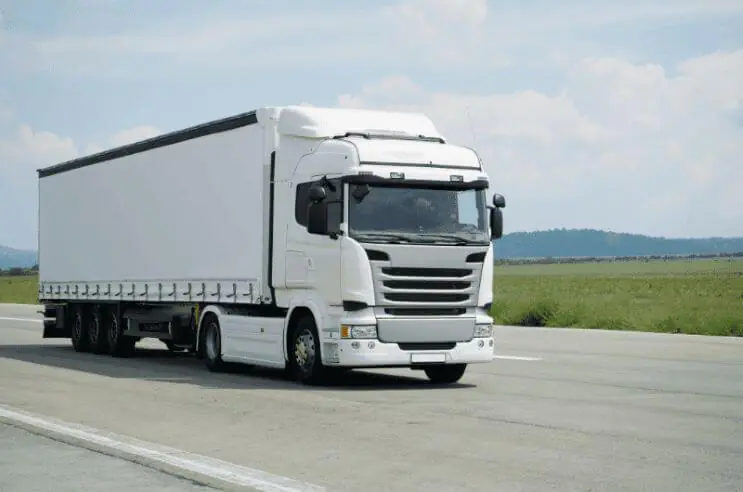
Source: www.canva.com
2. Trucks: The Leader in Road Freight Transport
In 2025, the truck market is expected to reach 7.08 million vehicle units in sales. In 2024, the global truck market reached a total of 6.60 million vehicle units in sales (statista.com). And this is not the only statistic that will show you that trucks are widely used for freight transportation.
- Truck drivers deliver almost 11.5 billion tons of freight each year.
- Truck drivers deliver goods worth over $1.2 trillion (contimod.com, 2024).
Types of Trucks
Similar to containers, there are also different types of trucks that are suitable for various types of cargo. Here is an overview of the most commonly used trucks.
- Box truck: A closed cargo truck with solid walls, a floor, and a roof. Thanks to its solid and covered structure, it protects the goods from weather conditions, making it suitable for consumer goods such as furniture, electronics, textiles, and more.
- Flatbed truck: A truck that only has a solid floor without side walls or a roof. It is suitable for transporting materials such as construction supplies, large machinery, and other cargo that is resistant to weather conditions.
- Reefer truck: A closed cargo truck equipped with cooling systems that maintain a low temperature inside. Suitable for transporting frozen foods, fresh products, pharmaceuticals, or chemicals.
- Tanker truck: A truck designed to transport liquid materials in a tank, such as fuel, water, or chemicals.
- Lowboy truck: A low-profile cargo truck that allows for the transport of heavy and tall items, such as construction machinery or cranes.
Tip: Read about the advantages and disadvantages of road transport.
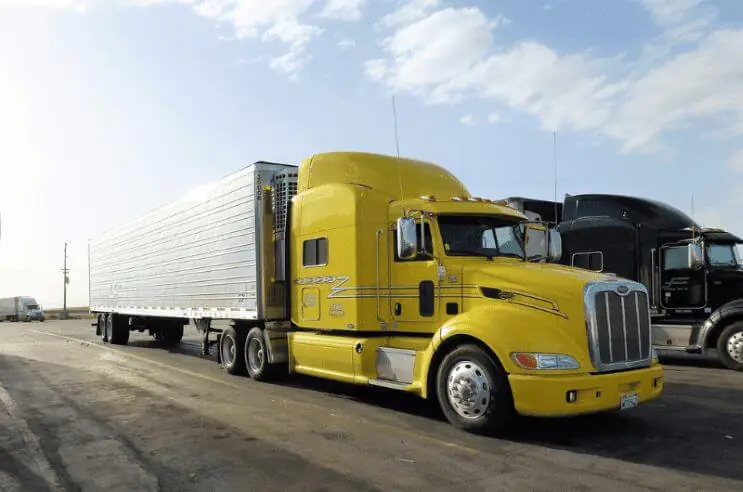
Source: www.canva.com
3. Trailers and Semitrailers: Enhancing Cargo Capacity
Neither a trailer nor a semitrailer has its own engine and must be towed by another vehicle. They are used to increase the cargo capacity that a motor vehicle can carry.
What’s the difference? A trailer has its own chassis, meaning its weight is supported only by its own wheels. A semitrailer, on the other hand, distributes its weight between its own wheels and the wheels of the towing vehicle.
Types of Trailers and Semitrailers
The primary types of trailers and semitrailers are the same as those of trucks, such as flatbeds, reefers, tankers, and others.
A special type of trailer is the car carrier trailer. These trailers are used for transporting multiple vehicles, typically in a stacked configuration, either with a ramp system or hydraulic lifts for easy loading and unloading.
Tip: Do you want to read in detail about all of the different kinds of trailers? Check out our article to learn which types of cargo each trailer is best suited for.
Cargo Spaces Can Be Tricky
The problem is that most cargo spaces do not have standardized dimensions or weight limits in different countries. For example, containers may have slightly different measurements in some regions due to varying transport regulations or infrastructure.
The same applies to names. What is known as a lorry in the UK is referred to as a truck in the USA. Therefore, when planning international transport, it is important to consider local specifications and regulations to ensure the correct selection of cargo space and avoid issues during loading, unloading, or meeting legal requirements.
How to Choose the Right Cargo Space for You
Thanks to the information above, you now know which type of cargo space is most suitable for different types of cargo. But what about the dimensions, cargo placement, weight limits, and other restrictions that come with freight transport? If you don’t want to get overwhelmed by all of the requirements, use the EasyCargo app for load planning. Are you wondering why? We have several reasons for you:
- The app includes 45 predefined cargo spaces. If you don’t find what you need, you can easily create your own custom cargo space.
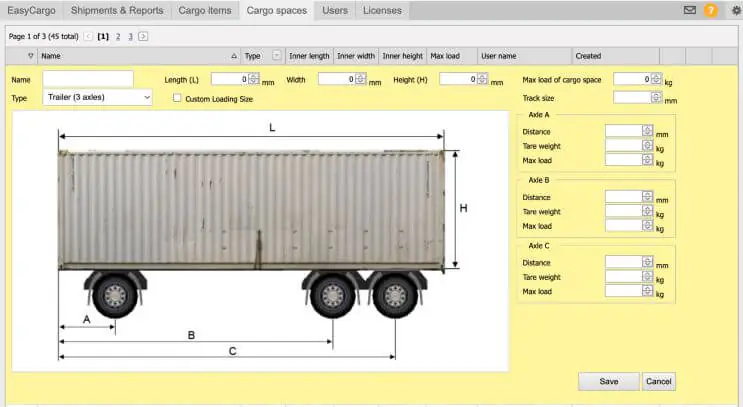
Source: www.canva.com
- When load planning items, you can choose from various options, such as „Do not tilt this cargo item” or „Do not stack on this cargo item.”
- As you plan, you can immediately see how much space and weight is available before reaching the maximum weight and space limit.
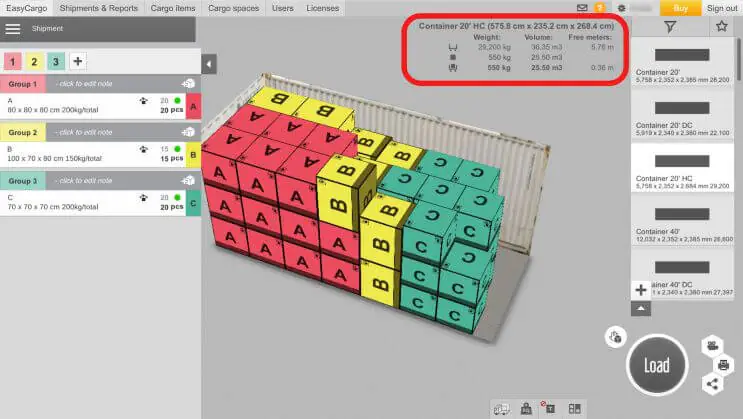
Source: www.canva.com
- And many more.
Frequently Asked Questions
1. What is the cargo capacity of a truck?
Each truck has different dimensions. Without more detailed information about the dimensions, it is not possible to provide a definitive answer. However, if you want to calculate the truckload capacity of your truck, take a look at our article where we have a detailed guide on how to do it.
2. What is the most commonly used shipping container?
The most commonly used type of container is the standard container, also known as a dry container. This container is best suited to transport a wide range of goods, from electronics and clothing to packaged food. It is designed to be weather-resistant and secure, making it ideal for long-distance shipping across different climates.
3. What is the biggest shipping container you can get?
The largest container is the 53-foot-high cube container, which is primarily used in North America.
Its dimensions are:
- Length: 53 feet (16.2 m)
- Width: 8 feet (2.4 m)
- Height: 9.5 feet (2.9 m)
Choose the Right Cargo Space
Are you unsure about how to select the right cargo space for your shipment? Contact us at EasyCargo, our team can show you how to find the best cargo space for your needs and advise you on how to easily and quickly create your loading plan using the EasyCargo software.




